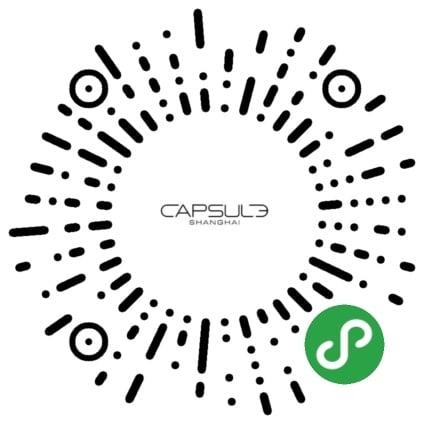The artist’s sculptures turn urban detritus into natural-looking forms
Scientifically speaking, ‘Core Sample’, the title of Hong Kong-based artist Leelee Chan’s solo exhibition at Capsule, refers to a procedure whereby a hollow drill is used to obtain a concentrated cylindrical sample of a substance (often natural but not always), for analysis. Leaving the surrounding source of the extraction intact constitutes an equally integral part of the investigative process. In this presentation of 22 new works – sculptures, paintings, collages and installations developed over the past three years – Chan takes her cue from this technique, extracting discards from her daily life and reconfiguring them.
Utilizing the entire premises, the show begins and ends with Sunset Capsule (2019). Comprised of five freestanding industrial lighting units, which the artist has manipulated and placed in arc formation, they illuminate Capsule’s outdoor garden, as well as the walkway from which the rest of her works can be glimpsed through the gallery windows. This setup not only extends the exhibition’s physical reach but also the duration of its visibility.
Light emanates from within the gallery, too. Orange Moon #2 (2019) – constructed from galvanized steel, spray-painted glass and an LED light – appears like a half-moon protruding high above from a wall near the entryway. Likewise, Pallet in Repose (Marine) (2019), a found black plastic skid partially filled with blue resin, mimics the effect of a stained-glass window. The use of mirrors in many of her works creates the illusion of yet more light via their reflective surfaces.
Chan’s paintings, at times intermixed with collage elements, provide texture and colour in contrast to her more flushed out, sombre-hued sculptures. One vibrant exception is Pallet in Repose (Portal) (2019), in which another arch-shaped glass – adorned with pink foam, transparent resin and transport-related materials this time – is set within a wooden pallet slightly raised above the floor. This sculptural constituent is linked to the wall-mounted painting behind it and forms a single artwork by way of an outlined section in the painting that from a certain perspective, aligns with the curve of the glass.
Elsewhere, elements derived from natural and organic forms – mother of pearl, seashells, leaves and other greenery – are encased or imprinted within various pieces, and only reveal themselves upon close inspection. By contrast, Chan’s Barnacles (2019) – concrete casts of egg cartons combined with metal hardware, resin, pigment and cable ties – openly climb up a gallery radiator, window and walls. With their smoothly sanded surfaces and anthropomorphic shapes, Chan’s misfit assemblages belie the artist’s hand in their creation and provide one of many surprisingly delicate moments in the exhibition – brought about elsewhere through scavenged chandelier crystals embedded within concrete encasements and her extensive use of metal nuts that lend decorative charm to many works.
An assortment of Chan’s materials are listed in Primal Matter (2019), a collaborative publication with fellow Hong Kong-based artist Eunice Tsang. Serving as a kind of visual index, the information it provides gains particular significance when considering works such as Chan’s six diminutive sculptures: Catcher (2015–17), for instance, a painted piece of mirrored styrofoam held aloft by a broken ceramic teacup lid, or Transmitter (2017) with its tiny seashells providing scant coverage to the broken-umbrella ‘ribs’ supporting them, inset in rock, glass and foam.
Ultimately, ‘Core Sample’ is a testament to Chan’s ongoing efforts to upcycle objects usually found on the street or among her household ephemera. This is not a new approach; however, it is imbued with a sensitivity to her surroundings that is evidenced most clearly in the towering architectonic structures – Spine (2019), Protector (2018), Endless Consumption (2015–17) – and her ‘Sunsets’ series. These new totems rise above their designation, elevated, literally, above the landfill that would otherwise have been their destination.
Ingrid Pui Yee Chu is a Hong Kong-based curator, writer and, with Savannah Gorton, co-founder and director of the non-profit commissioning organization Forever & Today, Inc.



